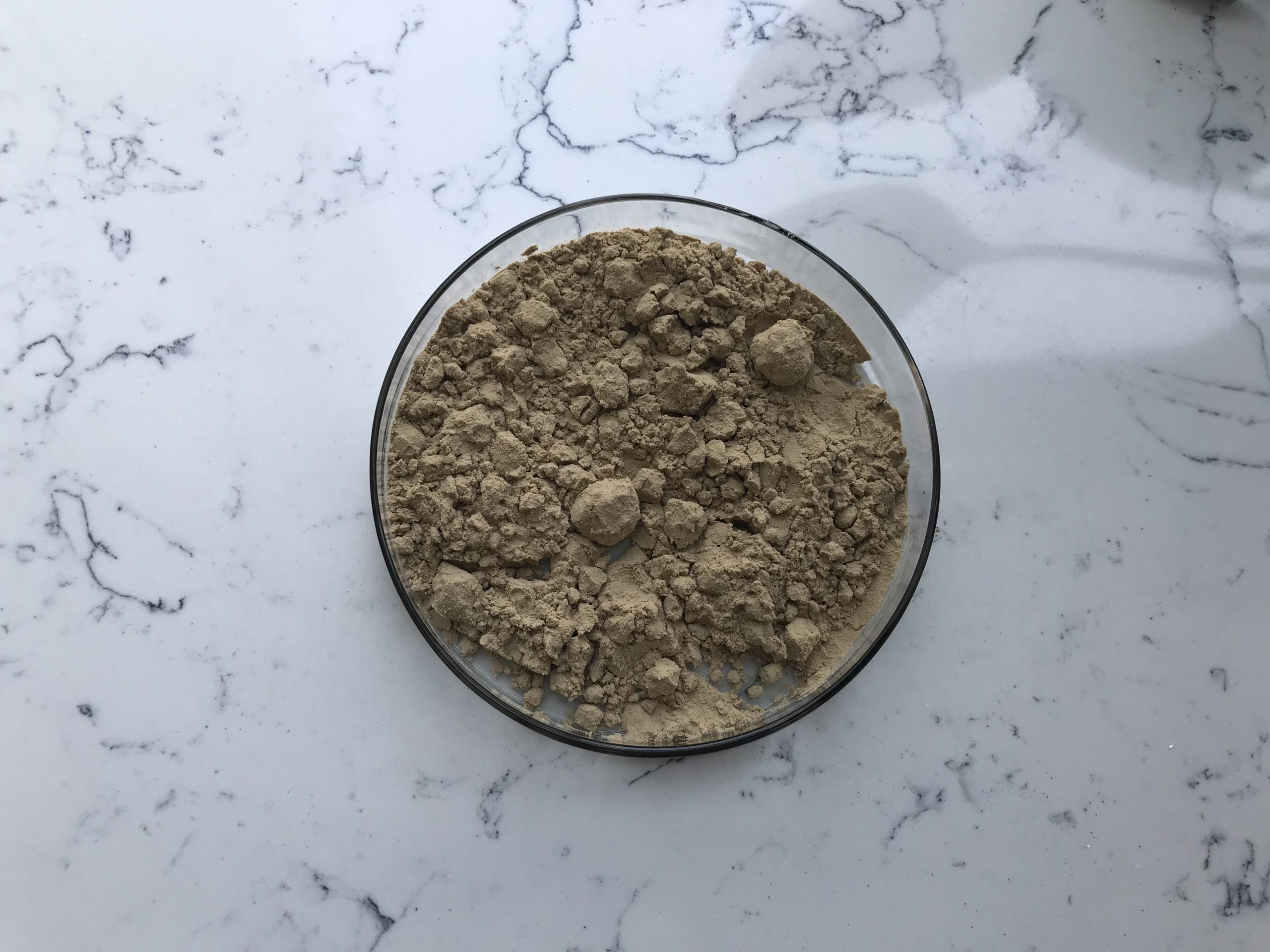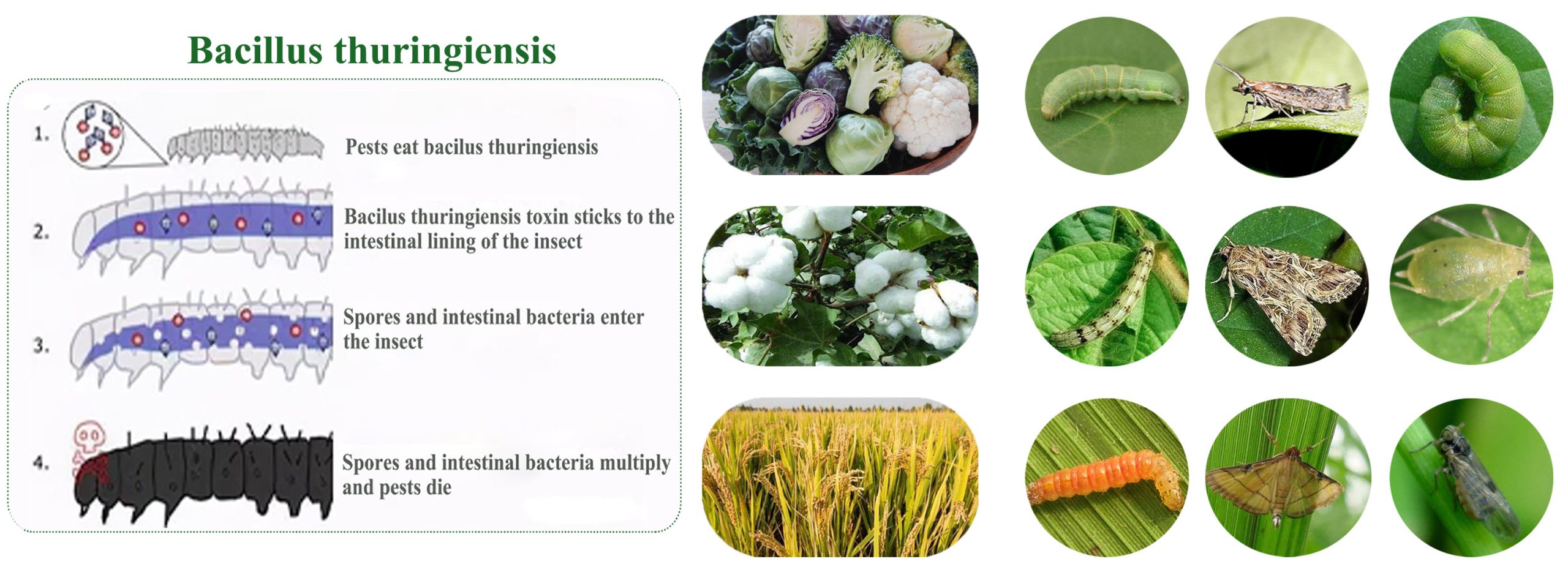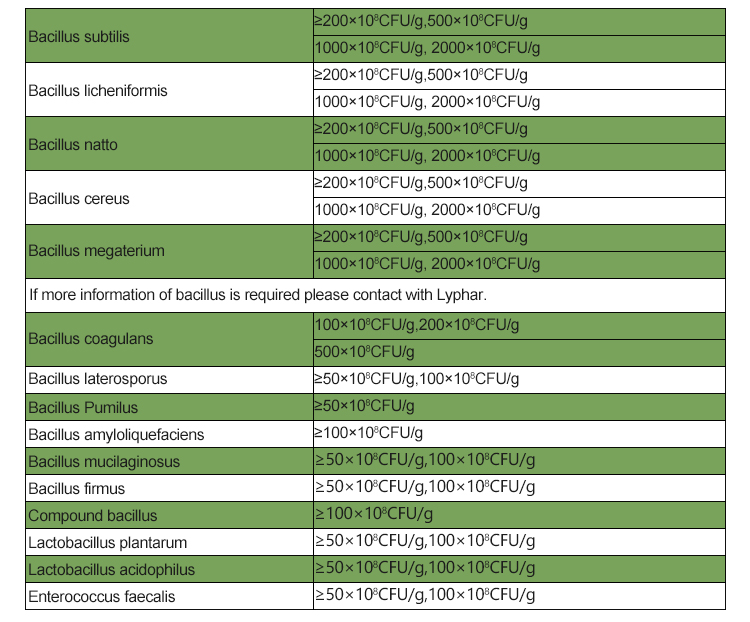Bacillus Thuringiensis (BT) is a gram-positive, spore-forming bacterium that is well-known for its insecticidal properties. It produces crystal proteins (delta-endotoxins) during sporulation, which are toxic to various insect larvae. The use of Bacillus Thuringiensis as a biological pesticide has been widely adopted due to its target-specific nature and minimal harm to non-target organisms, including humans and other animals.

Chemical Structure:
Bacillus Thuringiensis is a bacterium, and its chemical structure consists of the following key components:
DNA: Like all living organisms, Bacillus Thuringiensis contains genetic material in the form of deoxyribonucleic acid (DNA). DNA carries the genetic information that determines the bacterium’s characteristics and functions.
Cell Wall: Bacillus Thuringiensis has a rigid cell wall composed of peptidoglycan, which provides structural support and protection to the bacterium.
Spores: Bacillus Thuringiensis can form spores, which are dormant and resistant structures that help the bacterium survive in adverse conditions.

Physical Properties:
The physical properties of Bacillus Thuringiensis can vary depending on the strain and growth conditions, but some general characteristics include:
Shape: Bacillus Thuringiensis is a rod-shaped bacterium, appearing under the microscope as elongated and cylindrical.
Size: The size of Bacillus Thuringiensis cells typically ranges from 0.5 to 1.0 micrometers in width and 2.0 to 5.0 micrometers in length.
Color: The colonies of Bacillus Thuringiensis can vary in color, typically ranging from white to off-white, but this can depend on the specific strain.
Spore Formation: Under suitable conditions, Bacillus Thuringiensis can produce endospores that are highly resistant to environmental stressors such as heat, chemicals, and desiccation.

Insecticidal Crystal Proteins: The most remarkable property of Bacillus Thuringiensis is its ability to produce insecticidal crystal proteins (Cry toxins) during the sporulation stage. These proteins are toxic to the larvae of various insect pests.
PH And Temperature: Bacillus Thuringiensis can grow and produce toxins over a broad range of pH levels (pH 6.0 to 8.0) and temperatures (around 25-35°C).
It’s important to note that specific strains of Bacillus Thuringiensis may have unique characteristics, and ongoing research may provide additional insights into its chemical and physical properties. The information provided above offers a general overview of this bacterium.
